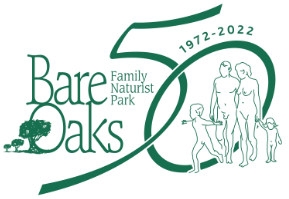
Over many years of studying our society’s view of nudity, I’ve come to understand that there is a clear hierarchy in what people consider nudity. A recent article (discussed below) has definitely confirmed the rather odd and irrational categorization of nudity offense. Generally speaking, in North America, it goes something like this:
Buttocks (mild nudity)
Grudgingly acceptable in most cases. It is widely seen in media and advertising with little public backlash. G-strings and thongs which show most, if not all, of the buttocks are legal on beaches almost everywhere in North America. One exception: In 2008, the ABC network was fined $1.4 million by the FCC for airing a 2003 episode of “NYPD Blue” that showed actor Charlotte Ross’ nude buttocks. But that fine has been appealed to the courts.
Breasts (moderate nudity)
A bit worse but genrally acceptable in a public setting when in art or when displayed for a paying customer. Also legally acceptable in some jurisdictions (but generally not socially acceptable) under equality concepts. Of course, we’re talking about women’s breasts because men’s breasts are not generally considered nudity despite the fact that they are mostly constructed the same way. And then we’re specifically talking about nipples and areolas because the rest of the breast can be freely exposed in all types of fashion without any repercussions. I guess it is difficult to define where the breast starts and stops so society has agreed that we should only be offended when we see a woman’s nipple or areola. For a more in depth discussion of breasts, see the November 2008 blog post titled Nipples on TV.
A woman’s groin (strong nudity)
It seems to be generally agreed in our society that this is a very upsetting area of the female body even though, in most positions, there is almost nothing to see other than hair. And even in those other positions, a fair bit of effort is required to show more than just flaps of skin.
A man’s penis (extreme nudity)
The male genitals are definitely considered to be the most offensive body part in all of humanity. It is rarely seen in either art or media presumably for fear of causing mass hysteria. I assume (although I have yet to be presented with any evidence) that people are generally concerned about the immense irreparable harm that is caused by merely seeing a penis. That well-known, but rarely explained or rationalized, concern has resulted in the Motion Picture Association of America (MPAA) creating a special warning of “male nudity” when rating movies. As reported in Spangle Magazine, three films in 2010, Jackass 3D, Eat Pray Love, and Grown Ups, have earned this new designation.
MPAA spokesman Craig Hoffman told Spangle that “Parents requested specifically after the movie Brüno that we provide such information.” So apparently some parents might be agreeable with their children seeing buttocks, breasts and women’s groins but not penises – thus requiring the special warning. I wonder what those parents tell their boys to do when they take showers. Or maybe they are only concerned about girls seeing penises. Perhaps it goes back to Freud’s theory that when girls see penises they might feel they are missing something and develop penis envy. But then those same parents should worry about their boys seeing women’s groins since, according to Freud, that might lead to castration anxiety.
How much more ridiculous can we get about our own bodies? How did it come to be that we are so embarrassed, ashamed and offended by our own image? I’ve said it many times before and I keep getting more and more confirmation: our society suffers from a phobia (Oxford: an extreme or irrational fear of or aversion to something) about our own bodies.
Recommended reading: Brian Patrick Thornton’s clever analysis of this new rating category in Spangle Magazine.
Photo by Aurelien Model










